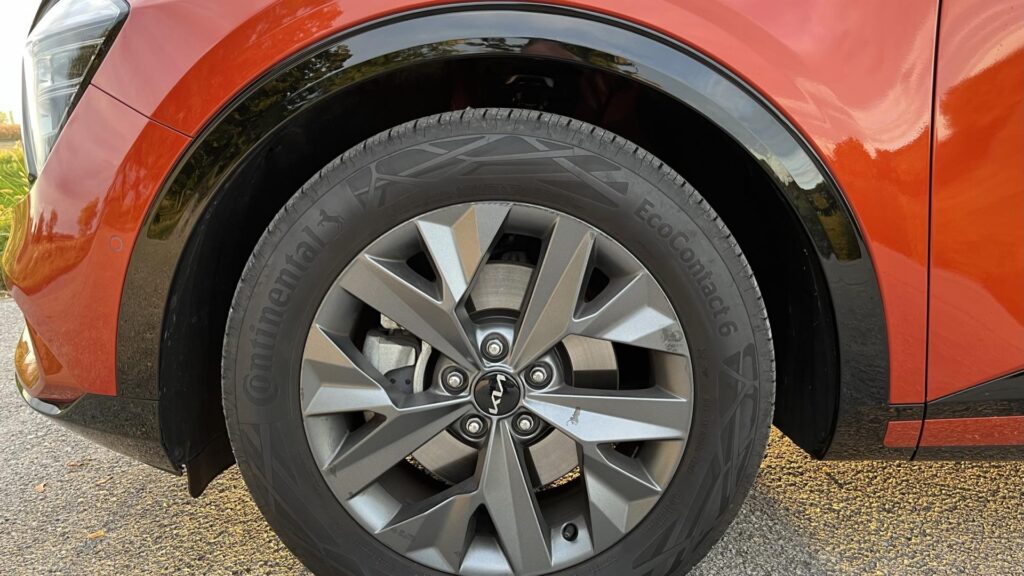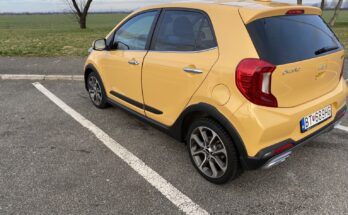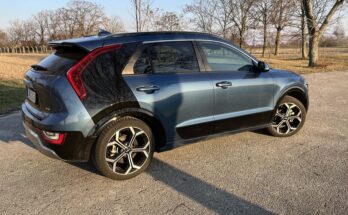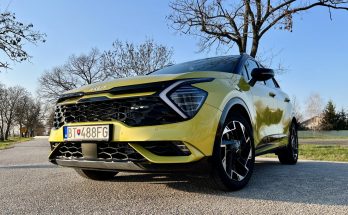The Kia Sportage is now in its fifth generation this year and for the first time offers a hybrid and plug-in hybrid in addition to the conventional petrol powertrain. We were able to test the HEV version of the former, combined with 4×4 drive and in GT-Line trim, throughout the week.
The first-generation Kia Sportage was one of the first ever SUVs and is therefore a model that pioneered the category. The first generation was introduced almost thirty years ago – in 1993. The second came in 2002 and the others in 2010 and 2015. So now we have the fifth generation, which for the first time has also received full hybrid drivetrains. The previous one only had a mild-hybrid on offer, but now you can buy the Sportage as a full hybrid without external charging (HEV) or even a plug-in hybrid (PHEV).

The Kia Sportage is the second vehicle after the EV6 to receive Kia’s new design language, as well as a new logo. Although it has a completely different silhouette, certain distinctive features are identical to the EV6. At first glance, the Kia Sportage looks smaller than the previous generation, but the opposite is true. It has grown slightly on virtually all sides and only its height is 10 millimetres shorter.

While the previous generation was a global model and was Kia’s best-selling vehicle worldwide, with the fifth generation the carmaker is emphasising that it is a vehicle designed specifically for Europe. In fact, for the first time ever, the European version of the Sportage is different and, what’s more, it’s also made in Europe. Specifically, at Kia’s state-of-the-art plant in Žilina, Slovakia. The production plant in Teplička nad Váhom is also the most modern Kia factory in the world.
The current generation is particularly eye-catching with its V-shaped, sideways LED headlights. Here the light signature is a little more spread out than on the EV6, but the basic features are identical. The radiator grille is, of course, much larger than that of the EV, which doesn’t need cooling so much. The roof may be a different colour to the rest of the bodywork for the first time on a Sportage, and overall the car has been given a very dynamic look from the front.

From the side, the chunky C-pillar catches the eye, which in turn emphasises robustness, and the door-covered sills, which in turn is a practical solution. From the rear, the V-shaped LED tail lights again catch the eye. It’s a shame they aren’t fully LED and the turn indicators have only been given conventional bulbs, which slightly spoils the overall impression.

The interior is pleasant, and in the GT-Line version, the seats also have reasonably good lateral guidance. The dashboard is very similar in layout to the one in the aforementioned EV6. There are minimal buttons and most functions are controlled via the centre display. There is a virtual cockpit in front of the driver where you can switch the display to suit you. Unlike other Kia vehicles, there are only two driving modes – Eco and Sport. Normal mode has therefore dropped out of the menu, which we don’t mind at all.

With the digital instrument cluster, you also get an interestingly designed blind spot tracking. When you turn on your turn signal, one of the alarms will show an image from the camera under the mirror on the side you’re about to turn. Also unusual is the digital instrument cluster’s ability to reflect the weather and time of day. The display can change the background depending on conditions. In the morning the sun rises, at night the whole graphic goes dark and stars come out, and when it rains, for example, you’ll see rain on the display as well. Most of the time we still rode with the standard alarm clock display, which is clearer.
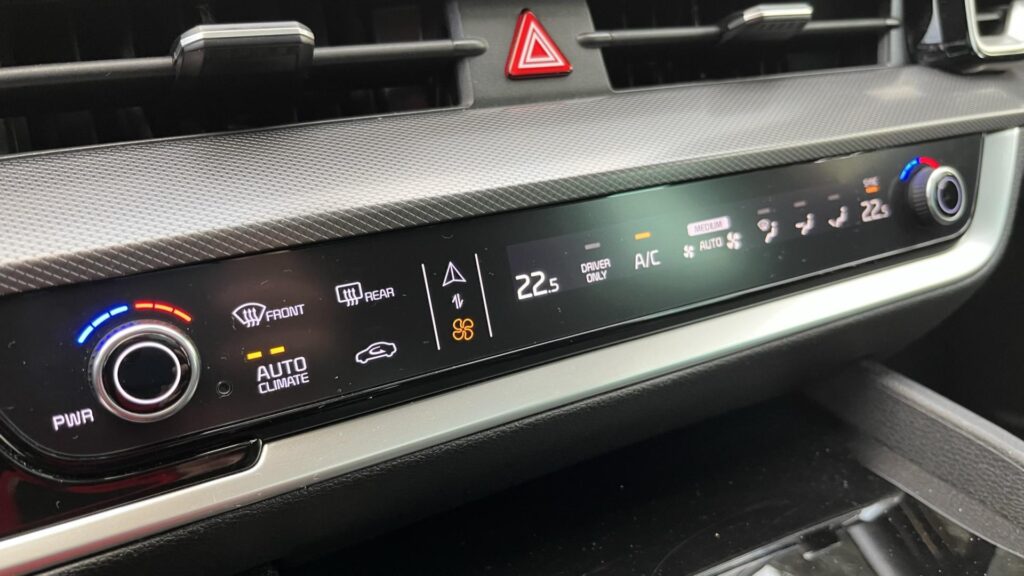
As with the EV6, there was no shortage of a changing touch bar below the center infotainment screen. Both climate and media can be controlled through it, and again, I’ll remind you that while this solution is quite practical, it bothered me slightly. The driver has to watch where he taps his finger while driving and when he doesn’t realise that the bar is currently switched to air conditioning, he gets an intense blast of ventilation instead of a higher volume on the car radio. This is perhaps the only transgression I could find regarding ergonomics.
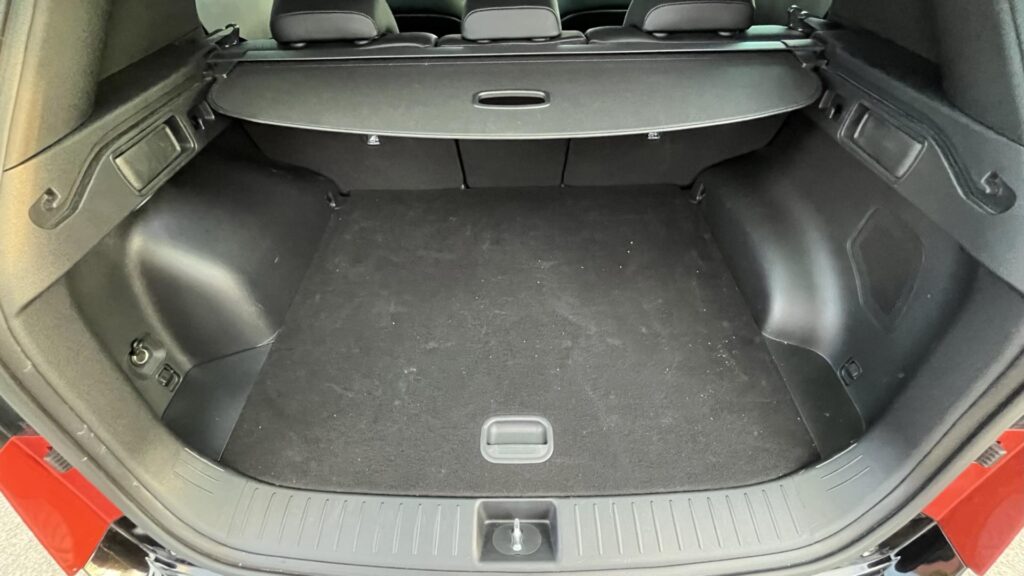
The new-generation Kia Sportage delights with plenty of interior space as well as great steering, side vision, and seats that are comfortable enough for the crew to spend several hundred miles in one go.

As far as the hybrid powertrain goes, it’s based on what we know from, say, the Niro or the larger Sorento. It’s mated to a turbocharged 1.6 T-GDi petrol engine. The latter has a power output of 132 kW (180 hp) on its own and works here in the so-called Atkinson cycle. The Hybrid (HEV) tested has a system output of 169 kW (230 hp) and can drive either the front or all wheels, as was the case in our example. Let’s also mention the Plug-in Hybrid (PHEV), which has a system output of 195 kW (265 hp) and is only available with all-wheel drive. It has the same internal combustion engine but a more powerful electric motor.

Hybrid versions have also been given an interesting solution that eliminates the problem of most hybrids today. Namely, a large portion of them only turn on the internal combustion engine for heating, even in a situation where an electric motor and saved energy from the battery would be enough to power them. The Kia Sportage, however, has a heat exchanger in the tailpipe to make better use of waste heat from the combustion engine. The Kia Sportage HEV has a WLTP-estimated combined fuel consumption of 5.5 l/100km in the front-wheel-drive version, while the 4×4 version has a stated average of 6.2 l/100km. That’s also the figure we arrived at over the course of a week and nearly a thousand kilometres driven.


